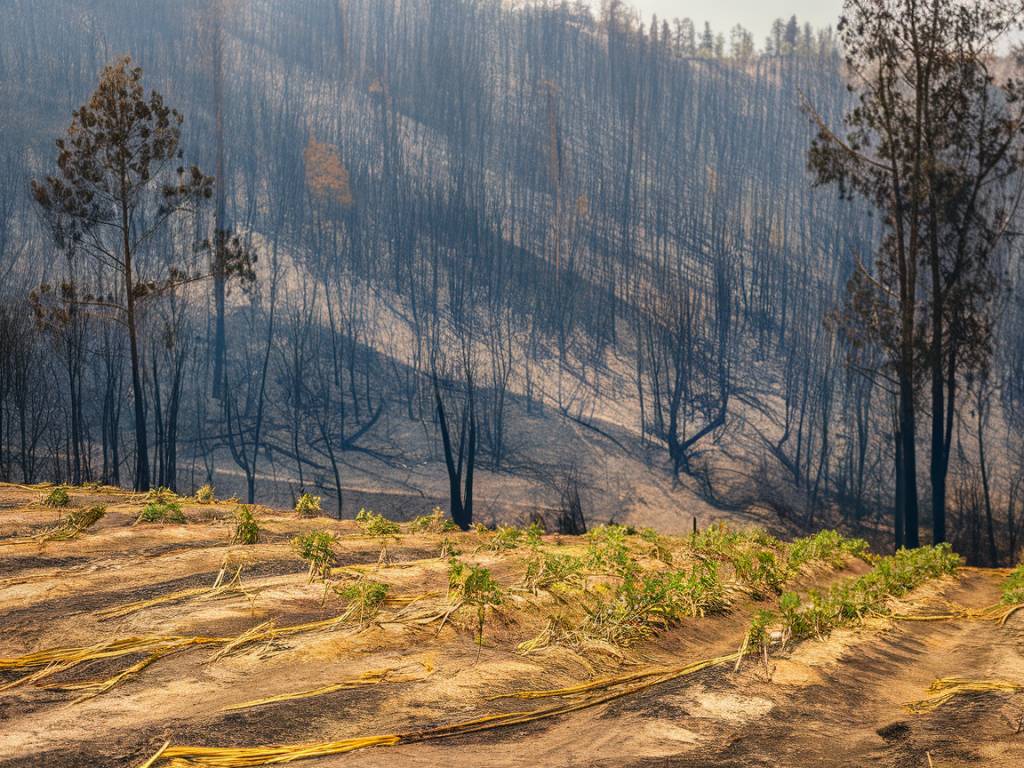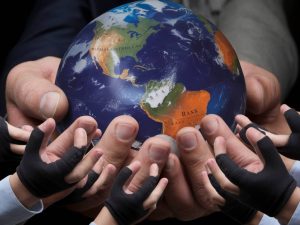
Hey there, fellow Earth-dwellers! It’s Sean here, your friendly neighborhood blogger, dishing out some serious yet entertaining food for thought. In today’s delectable article, we’re diving into a topic that’s as serious as a heart attack and as puzzling as a cat in a bath – climate change, and how it’s gnawing away at our global food supply like a particularly voracious caterpillar. So, settle in with your favorite snack (while you still can), and let’s unravel the mysteries of why food scarcity is becoming a bigger problem than you might realize!
Climate Chaos: Turning Farms into Follies
First things first, let’s talk about how climate change is flipping our farmlands upside down. Imagine you’re a farmer tending to your crops, basking in the predictability of the seasons. Now, throw in some unprecedented heat waves, torrential downpours, and unexpected frost – voila! You’ve got a recipe for agricultural mayhem. No amount of diligent farming can withstand Mother Nature’s chaotic mood swings brought on by climate change.
Because of these erratic weather patterns, the global production of staple crops like wheat, rice, and corn is taking a nosedive. This isn’t just a minor inconvenience; it’s a burgeoning crisis. These crops form the bedrock of diets around the world, and their scarcity can lead to a domino effect on food prices and availability.
Water Woes: A Drying Dilemma
Now, let’s chat about water, the essential elixir of life. With glaciers melting faster than ice cream on a hot summer’s day and unpredictable rainfall, our freshwater sources are dwindling. Water stress affects crop irrigation, livestock hydration, and even the fisheries that populate our soup bowls. It’s as if climate change is playing a cruel joke by handing out water when we don’t need it and withholding it when we do.
Regions that were once lush and green are transforming into arid wastelands, making farming next to impossible. When farmers can’t grow food, the entire food supply chain takes a hit, right up to your grocery store shelf. Sorry to rain on your picnic, but this is one storm we can’t ignore!
Pests and Diseases: New Challenges on the Horizon
Brace yourselves, foodies – it gets worse. Climate change also invites a plethora of pests and diseases to the party. Warmer temperatures and wetter climates create ideal breeding grounds for bugs and pathogens that love nothing more than to feast on our precious crops.
If you’ve ever had a run-in with a particularly persistent mosquito, you know how annoying pests can be. Now imagine an entire swarm of them attacking our food sources. Fungus and mold are also throwing their hats in the ring, making it a triple threat against our global food supply. It’s like a bad horror movie, except this one is real and unfolding right before our eyes.
Oceanic Offenses: Fish and Seafood at Risk
If you’re a fan of sushi or fish and chips, you might want to hold onto your chopsticks. Climate change is not just a landlubber issue – our oceans are feeling the heat too. Rising ocean temperatures and acidification are transforming marine ecosystems, leading to dwindling fish populations.
This isn’t just bad news for seafood lovers; it’s a calamity for coastal communities that rely on fishing as their main source of livelihood and protein. When local fish populations plummet, those communities face economic and nutritional crises. And let’s not forget the coral reefs, the underwater cities that support an array of marine life, are dying at an alarming rate due to rising temperatures and bleaching events. Now do you understand why Nemo was so keen on finding a new home?
Social and Economic Strains: A Global Ripple Effect
Beyond the environmental and biological implications, climate change-induced food scarcity has profound social and economic consequences. Food is more than sustenance; it’s tied to cultural identity, livelihoods, and economic stability. When food becomes scarce, it triggers a chain reaction that affects every aspect of society.
Food scarcity can lead to heightened geopolitical tensions, with nations scrambling to secure food resources, sometimes at the expense of weaker economies. Social disparities widen as the affluent can still afford high prices, while the vulnerable and underprivileged face heightened hunger and malnutrition. It’s a global ripple effect that can cause political unrest and even conflict.
Innovative Solutions: Fighting Back with Technology
But it’s not all doom and gloom. Humanity has a knack for innovation, and there are several technological advances aimed at curbing food scarcity. Vertical farming, hydroponics, and genetically modified crops are just a few examples of how tech is stepping in to save the day. These methods allow for more efficient use of land and water, and they can produce higher yields in controlled environments.
Another game-changer is the use of big data and AI in agriculture. By analyzing weather patterns, soil health, and crop performance, farmers can make more informed decisions about what to plant, when to harvest, and how to manage resources. It’s like having a crystal ball, but instead of predicting your love life, it’s forecasting your farm’s future.
Local Efforts: Small Steps, Big Impact
While technological advances are crucial, grassroots efforts also play a significant role in combating food scarcity. Community gardens, local farming initiatives, and sustainable practices can contribute to resilience against climate-induced food challenges.
Urban agriculture is becoming a trend in cities worldwide, providing fresh produce to urban populations while reducing the carbon footprint associated with transporting food. Farmers’ markets and farm-to-table movements are also reconnecting people with their food sources, fostering more sustainable consumption patterns.
In summary, climate change is throwing a wrench into our global food supply in ways we might not always see but are definitely beginning to feel. From farms to oceans, from pests to politics, the ripple effects are vast and varied. But with innovation, technological advancements, and community efforts, we can combat these challenges head-on. So, keep your spirits high and your pantry well-stocked, and stay tuned to this blog for more enlightening and entertaining insights on how to navigate our ever-changing world.
Until next time, stay curious and stay informed!
Yours truly, Sean


